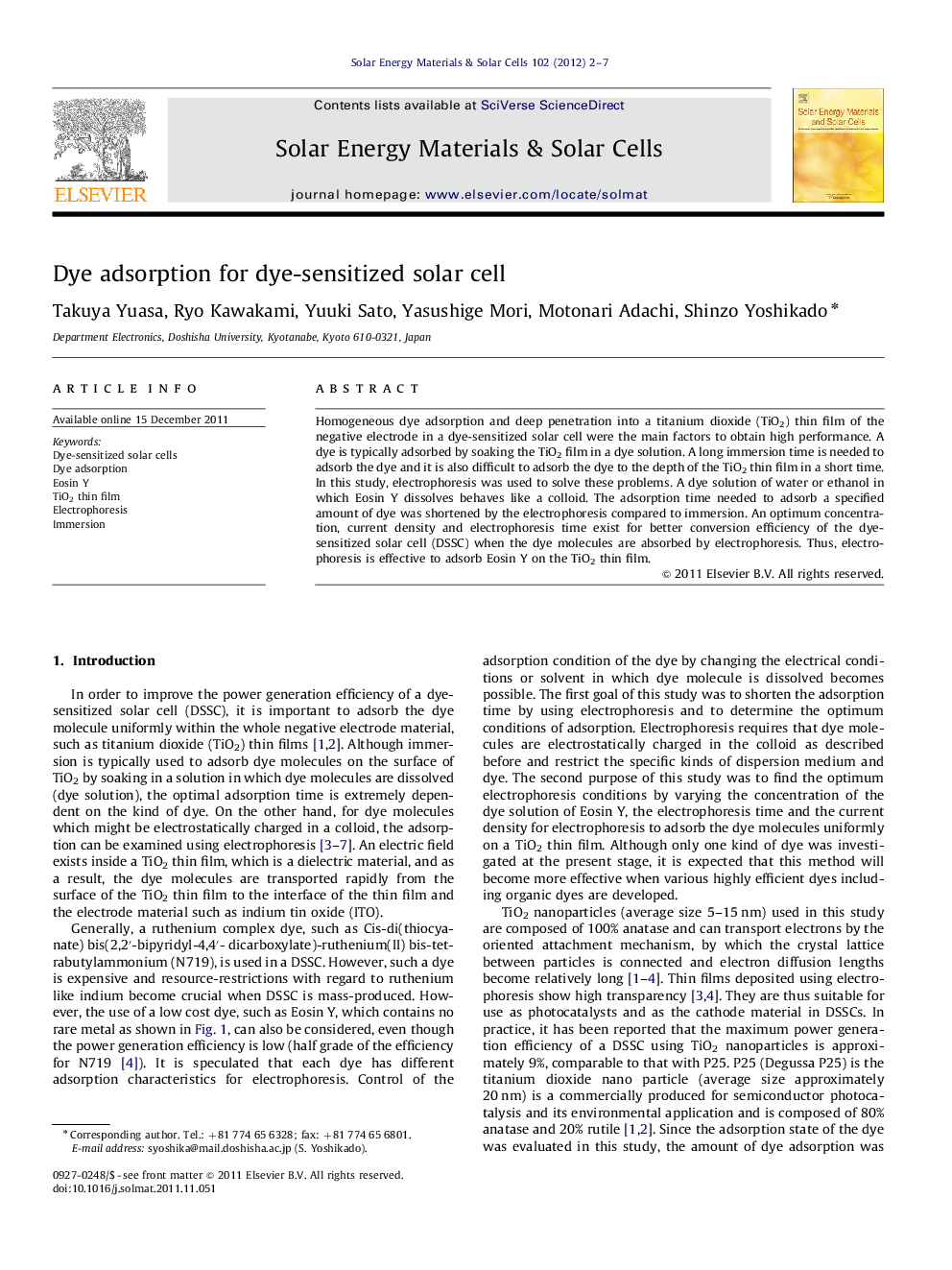| کد مقاله | کد نشریه | سال انتشار | مقاله انگلیسی | نسخه تمام متن |
|---|---|---|---|---|
| 78543 | 49336 | 2012 | 6 صفحه PDF | دانلود رایگان |

Homogeneous dye adsorption and deep penetration into a titanium dioxide (TiO2) thin film of the negative electrode in a dye-sensitized solar cell were the main factors to obtain high performance. A dye is typically adsorbed by soaking the TiO2 film in a dye solution. A long immersion time is needed to adsorb the dye and it is also difficult to adsorb the dye to the depth of the TiO2 thin film in a short time. In this study, electrophoresis was used to solve these problems. A dye solution of water or ethanol in which Eosin Y dissolves behaves like a colloid. The adsorption time needed to adsorb a specified amount of dye was shortened by the electrophoresis compared to immersion. An optimum concentration, current density and electrophoresis time exist for better conversion efficiency of the dye-sensitized solar cell (DSSC) when the dye molecules are absorbed by electrophoresis. Thus, electrophoresis is effective to adsorb Eosin Y on the TiO2 thin film.
► Adsorption time of Eosin Y on TiO2 thin film was shortened by the electrophoresis.
► Eosin Y can be transported to the depth of the TiO2 thin film rapidly by electrophoresis.
► Dye adsorption by electrophoresis was effective for Eosin Y.
Journal: Solar Energy Materials and Solar Cells - Volume 102, July 2012, Pages 2–7